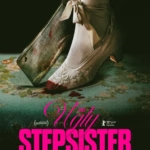While I hesitate to declare the Art House Cinema dead in the United States, I don’t think it’s an exaggeration to say it is on life support. The number of movie theaters devoted to screening art house fare – foreign films, independent features, repertory classics – has shrunk considerably in the 21st century for a variety of reasons. Changing distribution models, home video, streaming services, and the Covid epidemic all contributed to the most recent spate of closings, leaving a little over 100 operating in the country.
Not only are (were) these movie houses outposts for unique cinematic fare, but they also served as societal touchstones, each with a loyal clientele, eager to discuss and nurture films that seldom see the light of day at the multiplex. Distributors of these movies realized this, masterfully advertising and building interest for their upcoming releases.
Such was the case in the spring of 1986 when Orion Classics began pushing Claude Berri’s adaptations of Marcel Pagnol’s Jean de Florette and Manon of the Spring. With the former being released in the summer and the later in the fall, this was akin to two “Star Wars” films being released in quick succession for an Art House patron. For those of who frequented these establishments, it managed to be just as satisfying.
Taking place in provincial France during the early 20th century, Florette tells the story of Jean Cadoret (Gerard Depardieu), a tax collector who inherits a family farm. Hoping to turn over a new leaf, he leaves the urban life knows, set on living close to the land. However, he has a lot to learn about the agrarian way of life and even more about those he is now living among. Two rival farmers (Yves Montand and Daniel Auteuil) have different plans, having schemed to divert the stream that runs through Cadoret’s land.
Taking a decade later, Manon focuses on Cadoret’s daughter, Manon (Emmanuelle Beart) who, now working as a shepherdess, discovers the circumstances behind the tragedy that befell her father. Following the old maxim, she devises a revenge scheme that, while frigid when served, is no less satisfying.
Shot over 30 weeks so Berri could capture the changing seasons, the two films are stunningly captured by cinematographer Bruno Nuytten, the pastoral environment rendered as if they’d descended from the clouds. The Criterion Collection’s stunning 4K edition does the filmmaker’s work justice, the beauty of the setting explaining the extreme measures the characters undertake to live and flourish there.
In addition, the dual film collection features a documentary on the director, Claude Berri: The Card Dealer and a behind-the-scenes feature on the making of the movies, The Force of Destiny. An essay by scholar Sue Harris and stunning new art work by Sam Hadley round out this handsome package, the double feature a wonderful call back to the days when work of this sort was more readily available.




